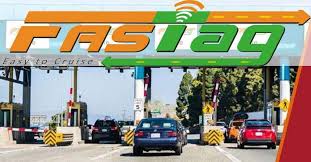Whether transitioning to a new vehicle or addressing a damaged tag, here are the necessary steps to navigate FASTag account management effectively, ensuring uninterrupted travels and streamlined toll payments.
In today’s digital age, FASTag has emerged as a game-changer in simplifying toll payments on Indian roads, offering unmatched convenience and efficiency for commuters. However, beyond the initial setup, effectively managing FASTag account requires familiarity with processes like deactivation and replacement.
Whether transitioning to a new vehicle or addressing a damaged tag, here are the necessary steps to navigate FASTag account management effectively, ensuring uninterrupted travels and streamlined toll payments.
Here is how one can deactivate their FASTag when necessary and seamlessly purchasing a replacement online —
Read More: These banks will be open on Sunday, March 31: Check full list of RBI’s agency banks here
Understanding FASTag Deactivation
FASTag deactivation is the practice of discontinuing the use of a FASTag account linked to a vehicle for toll payments on Indian roadways. This may be necessary for various reasons, with one common scenario being the sale of a car, requiring disconnection of the FASTag account to prevent incorrect toll charges.
Additionally, deactivation may be warranted due to damage or malfunction of the FASTag device, ensuring accurate toll transactions and avoiding inconvenience during payments. By facilitating a seamless transfer and proper management of toll payment mechanisms, FASTag deactivation ensures smooth transitions regardless of changes in vehicle ownership or technical issues with the device.
Read More: IRCTC Latest News: Indian Railways Runs 540 Holi Special Trains, Check Route, Full List Here
Steps to Deactivate FASTag
You can follow these steps to deactivate your FASTag:
1. Log in to the FASTag Portal: Begin by accessing your FASTag account via the designated online portal or mobile application provided by your respective bank.
2. Navigate to the Deactivation Section: Once logged in, locate the dedicated section for the deactivation or closure of your FASTag account within the portal’s settings or account management interface.
3. Provide Required Information: Follow the on-screen prompts to input essential details, including your vehicle registration number, FASTag ID, and reason for deactivation.
4. Confirm Deactivation Request: Verify that the data you have provided is true and comprehensive by carefully going over it and verifying that you want to deactivate.
5. Receive Confirmation: Following submission, you ought to receive a confirmation via email or message from the bank or issuing organization verifying that your FASTag account has been successfully canceled.
Read More: One Tech Tip: How to spot AI-generated deepfake images
Online Purchase of Replacement FASTag
Here are the steps you can take for online purchase of replacement FASTag:
1. Choose your FASTag issuer: Select a bank or NPCI as your issuer based on your preference and any existing accounts you hold.
2. Visit the issuer’s website: Navigate to the FASTag section on the chosen issuer’s website.
3. Select ‘Buy FASTag’: Look for options to purchase a new FASTag.
4. Fill out the application form: Enter your vehicle registration number, and KYC details, and choose a recharge amount.
5. Make the FASTag payment: Use your preferred online payment method to complete the purchase.
With the convenience of digital platforms like Park+ — a one-stop solution for all things FASTag — and the support of FASTag issuers, commuters can ensure uninterrupted journeys and streamlined toll payments, further enhancing the efficiency and convenience that FASTag brings to modern commuting.
Being aware of the process of FASTag deactivation and online replacement purchase is essential for maintaining seamless toll payments and hassle-free travels on Indian roads. By understanding the steps, commuters can confidently navigate the complexities of managing their FASTag accounts, whether it involves deactivating due to a vehicle sale or purchasing a replacement for a damaged tag.





































